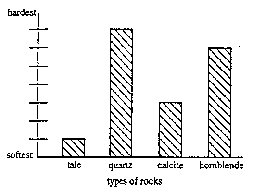 |
 |
|
|
|
TO THE STUDENTWelcome to this experimental science test. We hope that you will find it interesting and fun. Carefully read through these directions and the directions on the next page before you begin to work.You may be part of a group for the first part of this exercise. Each group should carry out the experiment and collect the data together, but each student must record the data in his or her own booklet. Be sure to record the data exactly as you observe them. After the data have been collected, each student should answer the questions independently. After you have finished your experiment and have recorded all of the data, you will be asked to answer some questions about the experiment and the data you recorded. Your answers must be written in this test booklet in the space provided. Make sure that you understand each question before you begin to write. At any time while you are writing your answers, you may look back at the directions for the experiment and the data you collected. Be sure that your answers are written as clearly and neatly as possible. Before you turn the page, read the list of materials given below and check to make sure that your group has everything listed.
Minerals Students will work in groups of four, but each student will record the results in his or her own booklet. Scratch Test
When you are done, go back to your desk. You will be asked to answer some questions. Please answer the following questions by yourself. 1. The samples you were given are pieces of quartz, calcite, talc, and hornblende. Compare your results from Table A to the information on the graph below. 
Try to identify your samples. Write the names in Table B.
2. Sandpaper is made of tiny grains of ground-up hard rocks glued to paper. It is used to scratch soft materials including wood. Which one of your minerals would make the best sandpaper? Why do you think so? ___________________________________________________________________ ___________________________________________________________________ ___________________________________________________________________ ___________________________________________________________________ |